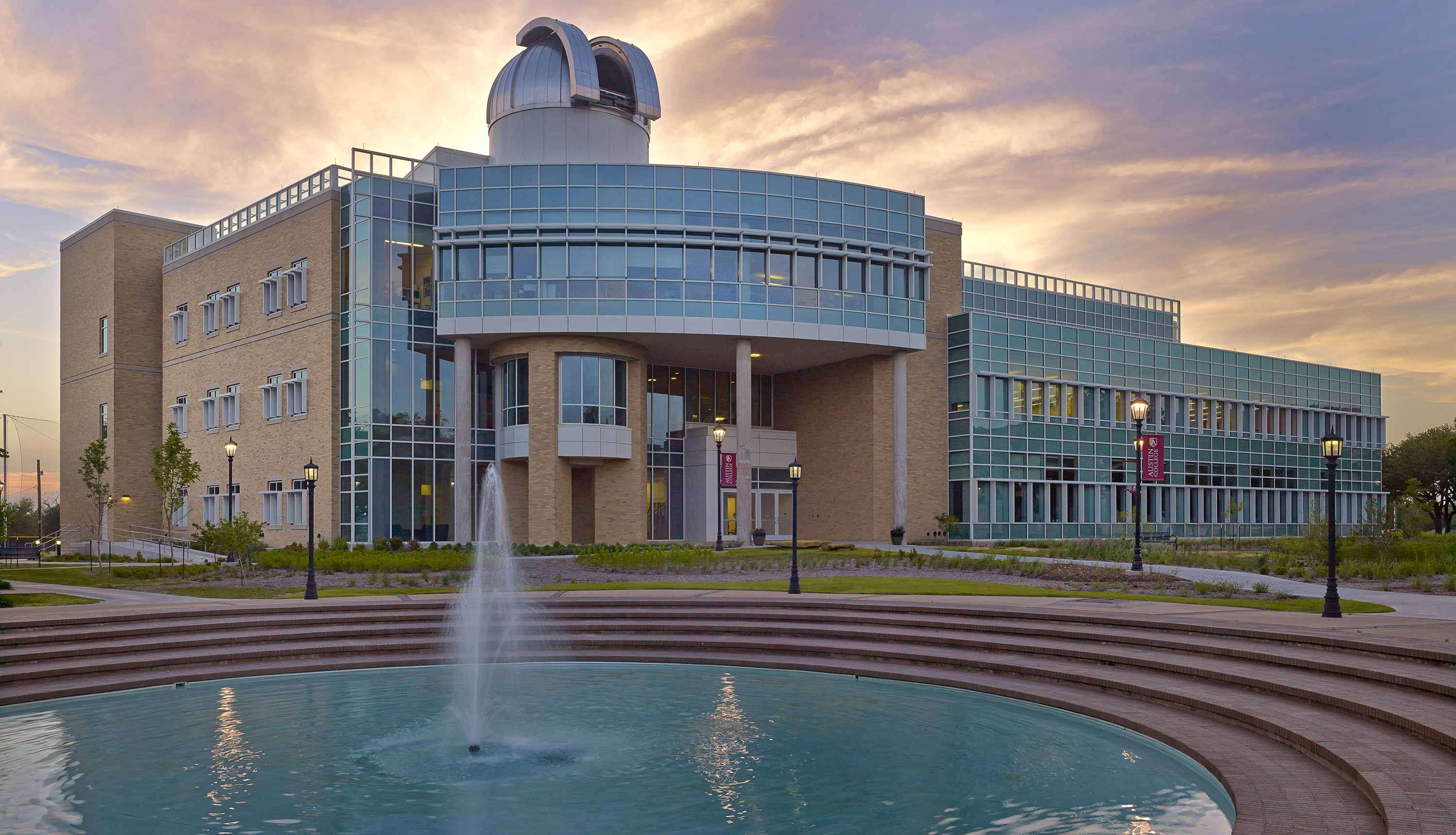"Home for the sciences” achieves LEED Gold certification
Austin College, a leading national independent liberal arts college located in Sherman, Texas, celebrated the fact its newest educational facility was awarded LEED Gold (Leadership in Energy Efficient Design) certification by the US Green Building Council for sustainability. The college’s new IDEA (Inquiry, Discovery, Entrepreneurship, Access) Center, a dynamic multidisciplinary science facility that houses astronomical and solar observatories, is the first LEED building on campus.
This hallmark of sustainable design was based on meeting green building requirements in six categories: sustainable sites, water efficiency, energy and atmosphere, materials and resources, indoor environmental quality and innovation in design. Page, the architect and engineers of record, and Shepley Bulfinch, the design architect, worked closely with Austin College to develop site-specific opportunities for sustainability such as solar shading, use of natural light and rooftop rainwater collection for irrigation of native landscaping. To view a downloadable .pdf of the Center's sustainability case study, click here.
Since the project is located in the endangered Texas blackland prairie ecoregion, it was designed to minimize environmental impact. Although no native vegetation remained on the previously developed site, the constraints of climate and soil type still existed. The remaining blackland soil was restored to a condition similar to undisturbed. Additionally, landscape plants were selected for their ability to flourish alone on rainwater once established. The project design included an irrigation cistern, reducing the use of potable water on landscape maintenance. And, the high diversity of floral species adds protection from pest outbreaks.
The facility itself was constructed using 90% FSC (Forest Stewardship Council) wood, which promotes the practice of sustainable forestry worldwide. Additionally, nearly half the materials used were sourced regionally, reducing the project’s total carbon footprint. The building materials also contained 25% recycled content and during construction, over 80% of the waste was successfully recycled. Achieving this level of sustainability required advance planning during the design phase and collaboration with the College, contractor and suppliers.
The College’s level of commitment to establishing a new campus standard for the design, construction, and operation of environmentally friendly buildings provided the support needed to design and construct the building efficiently enough to exceed expectations. In addition to reducing resource consumption and lowering operating expenses, having a LEED Gold certified building will benefit Austin College by instilling the importance of environmental sustainability in its students and increasing its attractiveness to future scholars.
Dee Maxey, Page principal-in-charge of the project said, “Architecture often serves more than one purpose but in this case, it’s immensely gratifying to see how many people are gaining from the IDEA Center. Austin College, its campus, faculty, students, visitors, astronomers, regional secondary students interested in the sciences and the city of Sherman, Texas are all beneficiaries of having a such a significant facility with a LEED Gold rating.” Shepley Bulfinch principal Elise Woodward called the sustainable building “a vibrant new identity for hands-on science teaching and research” for Austin College.
The IDEA Center reflects Austin College's long-standing leadership in science education and its commitment to sustainability. It serves as a hub for social and intellectual interaction and houses the Departments of Math, Computer Science, Biology, Chemistry, Environmental Studies, and Physics. This facility is the next significant step in Austin College’s current strategy to integrate science and technology into the liberal arts curriculum and maintain a competitive program in these fields.
The IDEA Center houses contemporary classrooms and multi-purpose labs that serve the biology, chemistry, computer science, environmental studies, mathematics, and physics departments. It features 32 laboratory classrooms, 40 offices, 16 lecture rooms, a 108-seat auditorium and a domed observatory housing a 24-inch telescope with an astronomical high-resolution image camera. The building itself also acts as a scientific instrument; a gnomon hole in the roof transforms the Center's atrium into a solar observatory, tracking the movement of the sun through the days and years.
Ground was broken for the three-story facility in June 2011, and construction began in earnest in November of that year. Hunt Construction Group of Dallas, Texas was the contractor on the project and participated in the achievement of the LEED certification. The IDEA Center became home to science, math, and computer sciences faculty and students in August of 2013. The results of the LEED certification process, which takes place after a building’s completion, were announced just in time for Earth Day 2014.
06/20/2014
People
Blog Resources
Related Posts
- Congratulations to 2019 Newly Licensed Professionals
- Evolving Our Building Sciences Practice
- Congratulations to 2018 Newly Licensed Professionals
- The Fifth Step in Creating a Net Zero Building: Putting It All Together
- The Fourth Step in Creating a Net Zero Building: Evaluating Energy Measures
- The Third Step in Creating a Net Zero Building: Identifying & Evaluating Energy Saving Strategies
- The Second Step in Creating a Net Zero Building: Creating the Energy Team












